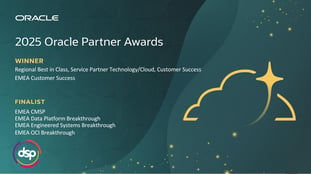MongoDB Migration

MongoDB Migrations
At DSP we are MongoDB Cloud Migration experts; whether you're migrating from on-premise, or from another Public Cloud. We have been delivering data management migrations, consulting and support for over 25 years and have seen all the pitfalls that a badly planned migration can throw at you.
We are equally at home spending 2 days migrating document storage to a cloud archive or spending 18 months migrating over 64,000 servers and associated applications as a green field implementation on cloud.
We are especially proud of our database platform expertise, recognised by Oracle and Microsoft as well as a the majority of Open Source developers which means we are one of few partners who are trusted by vendors and customers alike to deliver best practise cloud migrations. Our managed service pedigree means that on go-live of a successful migration, we can also manage that cloud environment for you.
Get in Touch
Main Benefits of Migrating to MongoDB
Code-native data access
Most databases force you to use heavy wrappers, like ORMs (Object Relational Mappers), to get data into Object form for use in programs. MongoDB’s decision to store and represent data in a document format means that you can access it from any language, in data structures that are native to that language (e.g. dictionaries in Python, associative arrays in JavaScript, Maps in Java, etc.).
Easy horizontal scale-out
MongoDB is designed from the ground up to be a distributed database. Create clusters with real-time replication, and shard large or high-throughput collections across multiple clusters to sustain performance and scaler horizontally.
Flexible Document Schemas
MongoDB’s document model allows virtually any kind of data structure to be modelled and manipulated easily. MongoDB’s BSON data format, inspired by JSON, allows you to have objects in one collection have different sets of fields (say, a middle name on a user only when applicable, or region-specific information that only applies to some records).
MongoDB supports creating explicit schemas and validating data so it doesn’t get out of control, but this flexibility is an incredible asset when handling real-world data, and handling changes in requirements or environment.
Powerful querying and analytics
What good is a database if you can’t find things inside it? MongoDB is designed to make data easy to access, and rarely to require joins or transactions, but when you need to do complex querying, it’s more than up to the task.
The MongoDB Query Language (MQL) is a full-featured, powerful language that allows you to query deep into documents, and even perform complex analytics pipelines with just a few lines of JSON-like MQL.
Change-friendly design
If you’re used to having to bring down your site or application in order to change the structure of your data, you’re in luck: MongoDB is designed for change.
We spend a lot of time and effort designing efficient processes and learning from our mistakes, but typically the database is slowing the whole thing down. There’s no downtime required to change schemas, and you can start writing new data to MongoDB at any time, without disrupting its operations.
DSP's Migration Methodology
Discover
The first step when migrating our customers to MongoDB is to conduct an in-depth discovery call. This call will consist of understanding exactly what kind of cloud model will suit your business the best. Whether that's a full migration to MongoDB or a partial hybrid, Cloud@Customer approach or even as a component in a multi-cloud strategy.
This discovery call will involve a MongoDB Data Architect, as well as your dedicated Account Director so you can understand both the technical and commercial sides of any potential cloud model.
You should leave this stage knowing which approach is right for you as well as other commercial and technical impacts; such as how to design for redundancy and availability.
Migrate
With the cloud model now agreed, the next stage of the MongoDB Cloud Migration process is the actual migration.
The Data Architect who joined your discovery call will stay with you throughout your journey to cloud, and will lead a team of certified MongoDB Engineers to carry out the migration. The scope of the migration will be unique to you. However, what is consistent is that every migration includes a transition into support to ensure your cloud environment is ready to go when handed over.
Manage
After a successful migration, the majority of our customers then continue with a DSP Managed Service. This entails proactive monitoring of your MongoDB environment on a 24*7*365 basis, with built-in health checks. Allow DSP to manage your cloud environment, so you can focus on managing your business.
Continue Your Journey to MongoDB
Whether you are in need of temporary storage to support an office move, a hybrid strategy to support a mix of sensitive applications, assistance in developing a multi-cloud strategy or an urgent move to support a hardware failure, DSP has the skills and relevant experience to move you to MongoDB.
Use the form below to contact us for a no-obligation, funded workshop or PoC to see where MongoDB can support your business.



.png?width=250&height=56&name=stonewater-logo%20(1).png)
